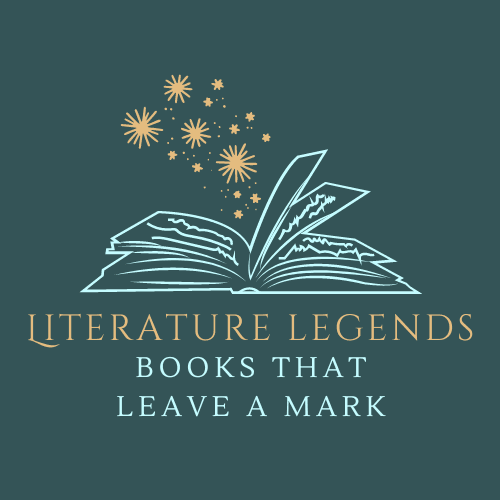Overview
Superhero literature is a captivating sub-genre of graphic novels that combines elements of adventure, fantasy, and moral dilemmas. It features protagonists endowed with extraordinary abilities, often tasked with protecting society from various threats. This genre not only entertains but also explores complex themes related to identity, power, and responsibility.
Key Characteristics
Superhero novels and graphic novels can overlap significantly, but there are distinct differences between superhero narratives and other subgenres of graphic novels. Here are some key distinctions:
1. Themes and Tropes:
– Superhero Novels: Typically revolve around themes of justice, morality, power, and responsibility. They often feature a clear dichotomy between heroes and villains, with a focus on the hero’s journey, personal sacrifice, and the struggle to balance their dual identities.
– Other Graphic Novel Subgenres: These can explore a wide range of themes, including romance, horror, fantasy, historical fiction, and slice-of-life narratives. The tropes can vary widely, often focusing on character development, social issues, or experimental storytelling rather than the hero-villain dichotomy.
2. Character Archetypes:
– Superhero Novels: Feature characters with superhuman abilities or extraordinary skills, often with elaborate backstories that explain their powers and motivations. The focus is usually on their heroic actions and the challenges they face.
– Other Graphic Novel Subgenres: Characters can be more grounded and relatable, often reflecting everyday experiences, societal issues, or personal struggles. They may not possess any extraordinary abilities and can range from fantastical to realistic portrayals.
3. Narrative Structure:
– Superhero Novels: Often follow a more traditional narrative arc, including the origin story, rising action, climax, and resolution. They may also include episodic adventures or arcs that contribute to a larger storyline, often leading to a climactic showdown.
– Other Graphic Novel Subgenres: Can employ a variety of narrative structures, including non-linear storytelling, multiple perspectives, or experimental formats. They may focus more on character exploration and thematic depth rather than a straightforward plot.
4. Art Style:
– Superhero Novels: Often feature bold, dynamic art styles that emphasize action and larger-than-life scenarios. The artwork is typically colorful and designed to enhance the dramatic elements of the story.
– Other Graphic Novel Subgenres: Art styles can vary widely, from minimalist and abstract to detailed and realistic. The visual approach often complements the tone and themes of the narrative, which may not require the same level of action-oriented artwork.
5. Cultural Impact and Audience:
– Superhero Novels: Frequently tied to larger franchises and media, such as films and television shows. They often have a dedicated fan base and can influence popular culture significantly.
– Other Graphic Novel Subgenres: May cater to niche audiences or explore independent themes, often focusing on personal stories or social commentary. They can be more experimental and less tied to mainstream media.
6. Publication and Distribution:
– Superhero Novels: Often published by major comic book publishers (like Marvel and DC) and are frequently serialized, leading to ongoing series and crossovers.
– Other Graphic Novel Subgenres: Can be published by independent publishers or as standalone works, often appealing to a broader range of literary tastes and artistic expressions.
In summary, while superhero novels are a specific subgenre of graphic novels characterized by their focus on heroes, powers, and moral dilemmas, other graphic novel subgenres encompass a broader spectrum of themes, character types, narrative styles, and artistic approaches.
Superhero literature encompasses a wide range of authors and creators, primarily in comic books, graphic novels, and prose. Here are some of the most influential authors and creators associated with superhero literature:
Comic Book Writers and Artists
1. Stan Lee – Co-creator of many iconic Marvel superheroes, including Spider-Man, the X-Men, Iron Man, and the Fantastic Four.
2. Jack Kirby – Co-creator of numerous Marvel characters alongside Stan Lee, known for his dynamic art style and storytelling.
3. Bob Kane and Bill Finger – Co-creators of Batman, one of the most enduring and popular superheroes.
4. Siegel and Shuster – Jerry Siegel and Joe Shuster created Superman, the first superhero, which set the template for the genre.
5. Frank Miller – Known for his work on “Daredevil” and “The Dark Knight Returns,” which redefined Batman for a new generation.
6. Alan Moore – Renowned for “Watchmen” and “V for Vendetta,” Moore’s work often deconstructs traditional superhero tropes.
7. Grant Morrison – Known for innovative works such as “All-Star Superman” and “Batman: Arkham Asylum.”
8. Brian Michael Bendis – Notable for his work on “Ultimate Spider-Man” and “Daredevil,” Bendis has significantly influenced modern superhero storytelling.
Prose Authors
1. Michael Chabon – Author of “The Amazing Adventures of Kavalier & Clay,” which explores the Golden Age of comic book creation.
2. Neil Gaiman – Known for “The Sandman” series, which blends mythology and superhero elements.
3. Caitlín R. Kiernan – Known for her work that often intersects with fantasy and superhero themes.
4. Nnedi Okorafor – Author of “Akata Witch” and “Binti,” she incorporates superhero elements into her speculative fiction.
Graphic Novelists
1. Marjane Satrapi – While not a traditional superhero writer, her graphic novel “Persepolis” has been influential in expanding the genre’s boundaries.
2. Scott Snyder – Known for his work on “Batman” and “American Vampire,” Snyder has made significant contributions to contemporary superhero comics.
These authors and creators have shaped the landscape of superhero literature, each bringing their unique perspectives and styles to the genre.

